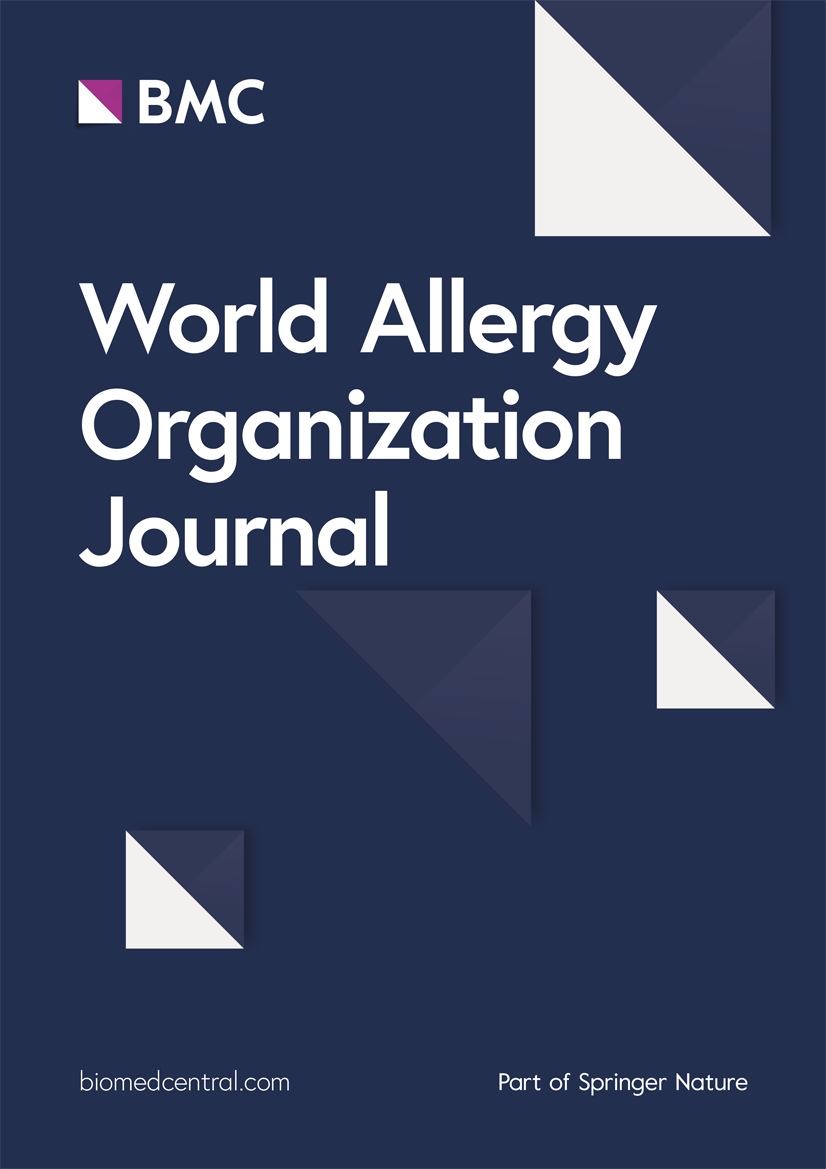2018年日本洪水对过敏性鼻炎处方的影响
IF 4.3
2区 医学
Q2 ALLERGY
引用次数: 0
摘要
气候变化和自然灾害会影响过敏状况。2018年7月发生的2018年日本洪水是日本历史上最大的水灾之一。我们旨在调查洪水对变应性鼻炎处方率的影响。方法回顾性队列研究利用受灾最严重地区洪水前后一年的国家健康保险索赔数据库数据。拥有地方当局认证的受害者代码的个人被归类为受害者组,而其他个人则被归类为非受害者组。采用logistic回归模型的差异分析来评估灾难对皮质类固醇或抗组胺鼻喷雾剂处方率的影响。雪松和柏树花粉(日本春季引起季节性鼻炎的主要过敏原)计数使用旋转式花粉收集器进行测量。结果在6176299人中,有36076人被确定为洪水受害者。2 ~ 4月雪松和柏树花粉季节处方量呈上升趋势,灾后花粉季节和非花粉季节受灾者处方量均高于非受灾者。差异中异数分析显示,灾害受害者与非受害者相比,鼻喷雾剂处方显著增加,灾后3个月调整优势比为1.40(95%置信区间:1.24-1.58),灾后1年调整优势比为1.72(95%置信区间:1.56-1.95)。亚组分析显示,与非受害者相比,所有年龄组以及受灾男女的鼻喷雾剂处方率都显著增加。结论:本研究表明,洪水灾民的变应性鼻炎处方长期增加,强调有必要认识到自然灾害是变应性鼻炎发病率的潜在因素。本文章由计算机程序翻译,如有差异,请以英文原文为准。
Impact of 2018 Japan floods on allergic rhinitis prescriptions
Background
Climate change and natural disasters can impact allergic conditions. The 2018 Japan floods, which occurred in July 2018, were among the largest water-related disasters in Japan's history. We aimed to investigate the impact of flooding on prescription rates for allergic rhinitis.
Methods
This retrospective cohort study utilized data from the National Database of Health Insurance Claims from 1 year before and after the flood in the most severely affected region. Individuals with a victim code certified by local authorities were categorized into the victim group, whereas the others were classified into the non-victim group. A difference-in-differences analysis with a logistic regression model was employed to evaluate the impact of the disaster on prescription rates of corticosteroids or antihistamine nasal sprays. Cedar and cypress pollen (the major allergens causing seasonal rhinitis during spring in Japan) counts were measured using a rotary-type pollen collector.
Results
Among 6,176,299 individuals included, 36,076 were identified as flood victims. An upward trend in prescriptions was observed during the cedar and cypress pollen season from February to April, and the pattern of higher prescriptions among disaster victims relative to non-victims continued throughout both the pollen and non-pollen seasons after the disaster. The difference-in-differences analysis indicated a significant increase in nasal spray prescription in disaster victims compared with non-victims, with adjusted odds ratios of 1.40 (95% confidence interval: 1.24–1.58) 3 months after the disaster and 1.72 (95% confidence interval: 1.56–1.95) 1 year after. Subgroup analyses showed that the prescription rates of nasal spray significantly increased across all age groups and in both males and females among disaster victims compared to non-victims.
Conclusions
This study demonstrated a long-term increase in prescriptions for allergic rhinitis among flood victims, underscoring the need to recognize natural disasters as potential contributors to the incidence of allergic rhinitis.
求助全文
通过发布文献求助,成功后即可免费获取论文全文。
去求助
来源期刊

World Allergy Organization Journal
Immunology and Microbiology-Immunology
CiteScore
9.10
自引率
5.90%
发文量
91
审稿时长
9 weeks
期刊介绍:
The official pubication of the World Allergy Organization, the World Allergy Organization Journal (WAOjournal) publishes original mechanistic, translational, and clinical research on the topics of allergy, asthma, anaphylaxis, and clincial immunology, as well as reviews, guidelines, and position papers that contribute to the improvement of patient care. WAOjournal publishes research on the growth of allergy prevalence within the scope of single countries, country comparisons, and practical global issues and regulations, or threats to the allergy specialty. The Journal invites the submissions of all authors interested in publishing on current global problems in allergy, asthma, anaphylaxis, and immunology. Of particular interest are the immunological consequences of climate change and the subsequent systematic transformations in food habits and their consequences for the allergy/immunology discipline.
 求助内容:
求助内容: 应助结果提醒方式:
应助结果提醒方式:


